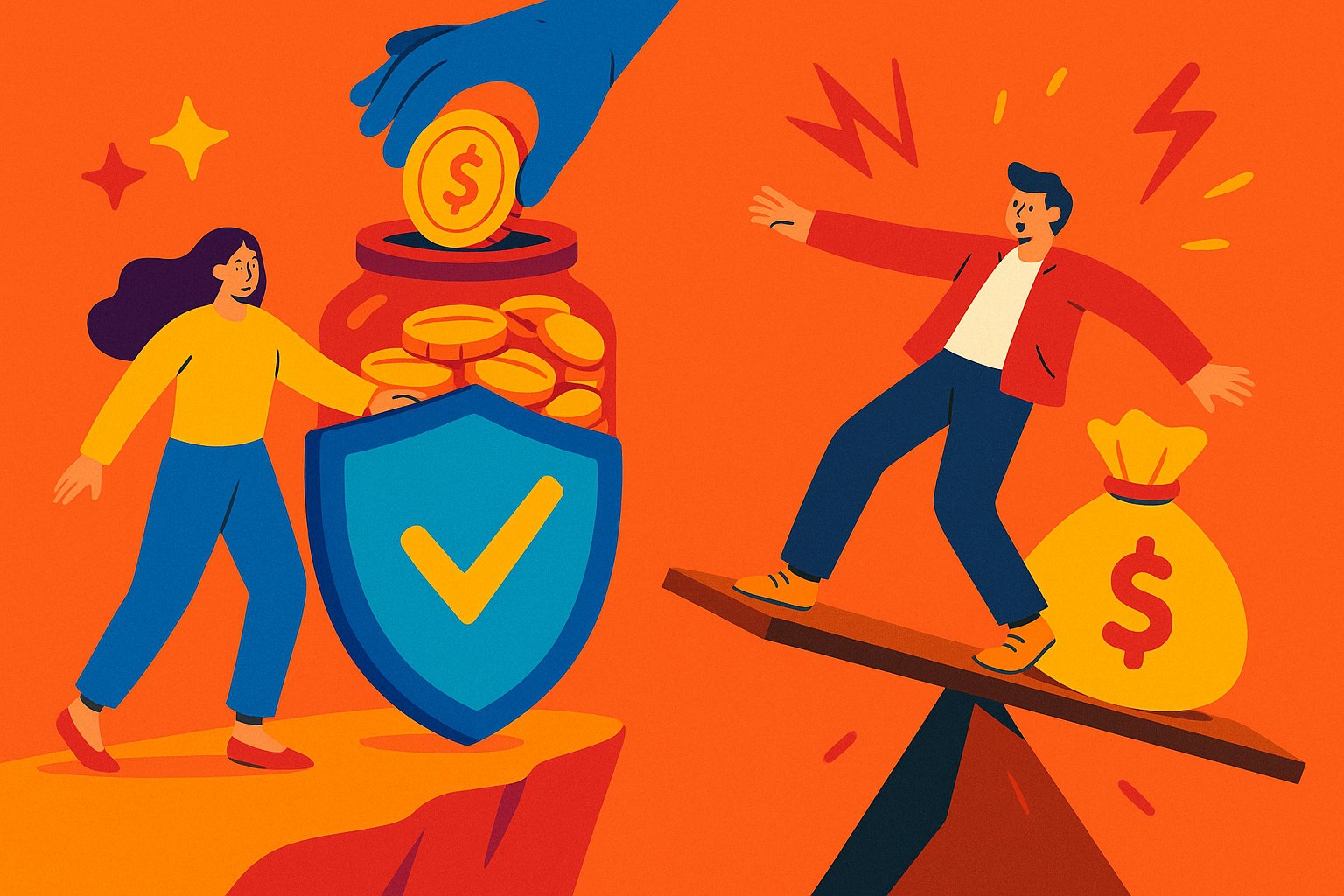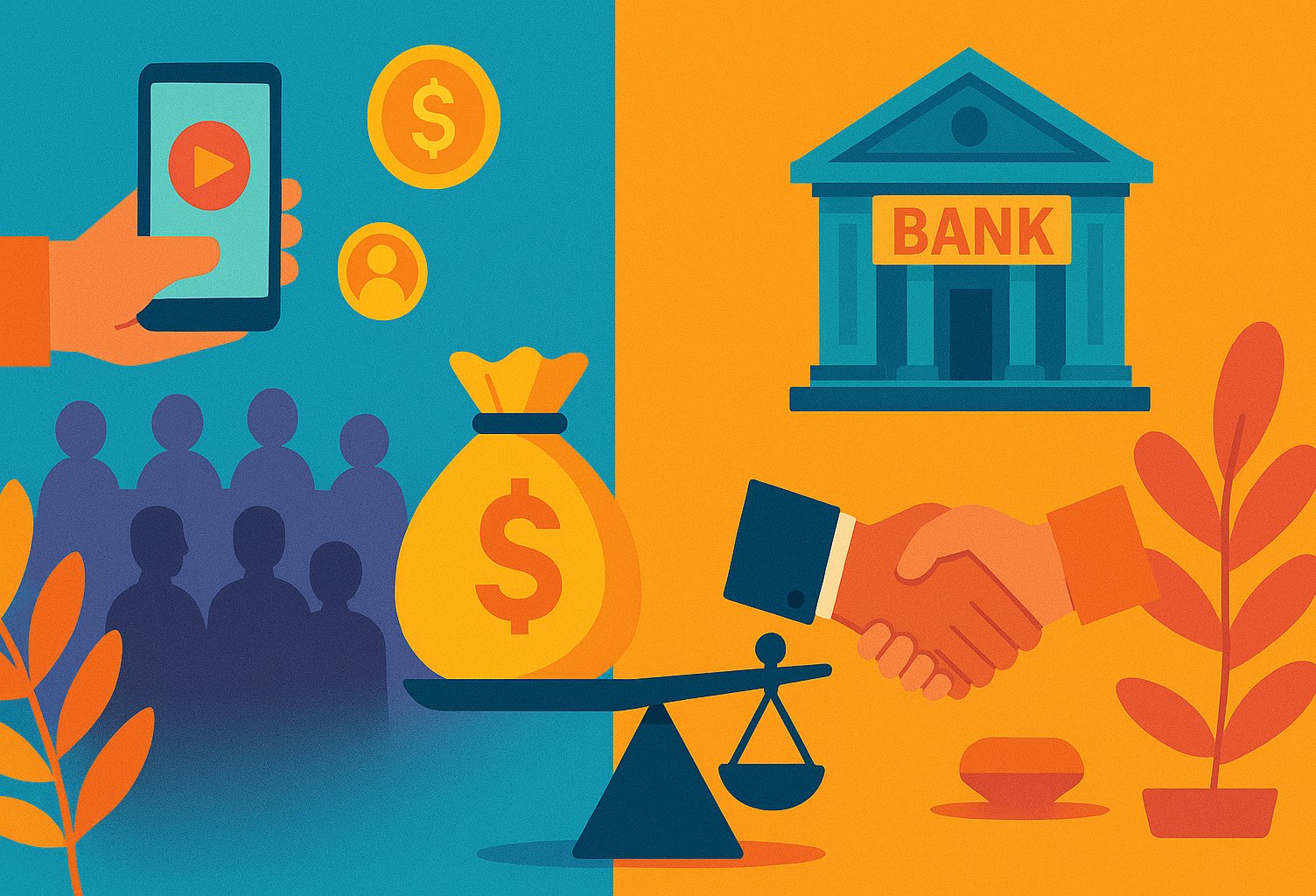Weighing the Scales of Funding and Risk
In the complex labyrinth of startup financing, entrepreneurs often confront a pivotal dilemma: should they turn to the crowd for support or borrow against their own credit through personal loans? Crowdfunding platforms like Kickstarter, Indiegogo, and GoFundMe have democratized capital raising, enabling innovators to broadcast their vision to millions and secure pre-orders or donations in exchange for exclusive perks. Personal loans, conversely, offer a straightforward path to cash—applicants tap into banks or online lenders, leverage their creditworthiness, and receive lump-sum disbursements with fixed repayment schedules. At first glance, both options promise flexibility and speed, but beneath the surface lie contrasting risk profiles, obligations, and potential pitfalls. Crowdfunding shifts risk onto supporters and hinges on marketing prowess, while personal loans saddle founders with personal liability and interest obligations regardless of business outcome. Selecting the less risky strategy requires a nuanced understanding of how each model aligns with your financial resilience, project complexity, market readiness, and tolerance for uncertainty. In the sections that follow, we embark on an in-depth exploration of crowdfunding and personal loans—unpacking their mechanics, scrutinizing their strengths and vulnerabilities, and offering strategic insights to guide you toward the option that best mitigates risk while fueling your entrepreneurial ambitions.
Casting the Net: Understanding Crowdfunding
Crowdfunding transforms the traditional investor pitch into a global, interactive showcase. Entrepreneurs craft campaign pages that blend evocative storytelling, prototype demonstrations, and tiered reward systems to entice backers. Whether the goal is to fund a state-of-the-art gadget, a community art project, or a socially conscious initiative, crowdfunding leverages the power of social media and viral sharing to attract small contributions from large audiences. Campaigns typically run on defined timelines—often 30 to 60 days—creating urgency and encouraging early pledges. Success hinges on marketing strategy: founders must orchestrate email blasts, influencer partnerships, and social media outreach to generate momentum. Platforms may operate on an all-or-nothing basis, returning funds to backers if goals aren’t met, or on flexible funding models that allow creators to keep whatever they raise. This model reshapes fundraising into a public performance, offering community validation and market testing alongside capital infusion.
Walking the Tightrope: The Mechanics of Personal Loans
Personal loans represent a more conventional line of credit extended based on an individual’s credit history, income stability, and debt-to-income ratio. Borrowers apply through banks, credit unions, or fintech lenders, submitting financial documentation and consenting to credit checks. Upon approval, lenders disburse a lump sum, which borrowers repay over set terms—usually two to five years—at fixed or variable interest rates. Loan amounts range from a few thousand to tens of thousands of dollars, depending on the applicant’s credit profile and lender policies. Unlike business loans, personal loans do not require collateral, but they carry personal liability: failure to repay damages credit scores, triggers financial penalties, and can lead to collections or legal action. The predictability of monthly payments appeals to financially disciplined entrepreneurs, but missed payments create cascading consequences that can disrupt both personal and business finances.
Diverging Paths: Risk Frameworks in Crowdfunding and Personal Loans
Both crowdfunding and personal loans present distinct risk frameworks. Crowdfunding’s all-or-nothing campaigns mitigate financial risk for founders—if goals aren’t met, no money changes hands, and no obligations follow. Yet, reputational damage can linger after a failed campaign, and the vigorous marketing required to succeed introduces opportunity costs. Furthermore, overpromising features or underestimating production costs can lead to backer dissatisfaction, refund demands, and legal headaches. Personal loans, meanwhile, guarantee access to capital regardless of project traction, but place reimbursement obligations squarely on the borrower’s shoulders, irrespective of revenue or project success. High interest rates amplify the cost of capital, and the strain of fixed repayments can suffocate cash flow during lean periods. Assessing which path carries less risk requires evaluating the interplay of financial liability, market validation, operational complexity, and reputational stakes.
The Crowdfunding Upside: Community, Validation, and Non-Dilutive Capital
Crowdfunding shines in its ability to unite financial backing with audience engagement. By pre-selling products or offering unique experiences, founders secure funds without sacrificing equity or incurring debt. Successful campaigns deliver immediate market validation—proof that consumers value the product enough to pay in advance. This social proof bolsters credibility, attracts press coverage, and expands networks of brand advocates who amplify outreach at no extra cost. Creative reward tiers—such as limited editions, early-bird discounts, or behind-the-scenes access—drive excitement and foster emotional investment in the project’s journey. Moreover, campaign milestones and traction signals can pave the way for future financing rounds, as investors view crowdfunding success as a demonstrable indicator of demand.
The Personal Loan Advantage: Predictability and Control
Opting for a personal loan offers founders clear financial parameters and autonomy over project execution. With a defined disbursement schedule and fixed repayment obligations, entrepreneurs can plan budgets, allocate resources, and forecast cash flow with precision. Unlike equity or debt raised through business-specific instruments, personal loans remain detached from business governance—no external stakeholders intrude on strategic decisions, and no board seats are to be shared. For projects with straightforward capital requirements—such as hiring essential talent, purchasing inventory, or covering operational expenses—personal loans deliver capital quickly without the elaborate marketing campaigns demanded by crowdfunding. This directness appeals to founders who prefer streamlined processes and who possess the confidence to repay debt based on projected revenues.
The Crowdfunding Catch: Hidden Costs and Operational Hurdles
While crowdfunding can galvanize support, it often conceals considerable hidden costs. Crafting a polished campaign demands professional photography, video production, copywriting, and web design—investments that may surpass the initial revenue raised. The whirlwind pace of campaign launches requires front-loaded marketing budgets, influencer fees, and occasional paid advertising to reach broader audiences. Post-campaign fulfillment introduces logistical complexity: coordinating global shipping, managing customs regulations, and ensuring quality control across diverse reward tiers. Delays or miscommunications can ignite backer frustration, trigger refund requests, and erode brand trust. Furthermore, intellectual property risks surface when product designs and proprietary concepts become transparent to competitors prior to securing patents or trademarks.
The Personal Loan Pitfalls: Debt Obligations and Financial Strain
Personal loans embed risk in the form of binding debt that must be repaid regardless of business outcomes. Borrowers with suboptimal credit scores may face high interest rates or stringent origination fees, inflating the total cost of capital. Even modest monthly payments can strain startups with uneven revenue streams, forcing founders to prioritize debt service over critical reinvestment. In extreme cases, default can lead to legal judgments, wage garnishments, and an irreversible blow to personal creditworthiness—hindering future borrowing for both personal and professional needs. Unlike crowdfunding, which shifts risk to backers, personal loans internalize financial risk, compounding pressure on entrepreneurs to deliver revenue at an accelerated pace.
Strategies to Mitigate Crowdfunding Risks
To safeguard against crowdfunding pitfalls, founders must adopt strategic pre-launch and post-campaign practices. Thorough market research and small-scale validation—such as prototypes tested through focus groups or pre-launch landing page sign-ups—can refine messaging and gauge genuine demand. Allocating budgets for professional campaign assets ensures that presentations convey credibility, while securing manufacturing partnerships in advance reduces the likelihood of fulfillment delays. Transparent communication is paramount: regular backer updates, honest progress reports, and mitigation plans for unforeseen setbacks preserve trust. Structuring reward tiers realistically, with conservative production cost estimates, minimizes the risk of overcommitment. Finally, harmonizing crowdfunding efforts with broader marketing channels—email lists, brand communities, or strategic partnerships—amplifies reach without sole reliance on paid ads.
Tactics to Manage Personal Loan Liability
Mitigating personal loan risks hinges on rigorous financial planning and disciplined repayments. Entrepreneurs should secure the lowest possible interest rates via credit score optimization, loan comparison tools, and negotiation with lenders. Building a conservative cash-flow forecast—accounting for seasonal fluctuations, contingency reserves, and worst-case scenarios—ensures that monthly payments remain manageable. Integrating debt service into operating budgets from day one prevents payment surprises and sustains operational liquidity. Strategic use of loan proceeds—prioritizing revenue-generating investments such as customer acquisition campaigns or high-ROI equipment—maximizes the impact of borrowed funds. In the event of revenue shortfalls, maintaining open communication with lenders can yield temporary payment deferrals or modified terms, averting default and preserving credit integrity.
Hybrid Approaches: Blending Crowdfunding with Personal Loans
Savvy founders sometimes combine crowdfunding and personal loans to balance risk and reward. Pre-launch personal loans can underwrite the development of high-quality prototypes and campaign materials, enhancing the chances of a successful crowdfunding outcome. The crowdfunding campaign then recoups the prototype loan cost while generating surplus capital for scaled production—effectively rolling debt into backer contributions. Alternatively, a post-campaign personal loan can bridge fulfillment costs if campaign funds fall short, preventing delays and maintaining backer confidence. This hybrid strategy leverages personal credit to unlock crowdfunding advantages while safeguarding against funding gaps that could derail project timelines.
Case Studies: Real-World Risk Assessments
Consider the saga of Lumina Lights, a startup that raised $250,000 on Kickstarter for its solar-powered lanterns. The campaign’s compelling video and eco-focused narrative attracted enthusiastic backers, but underestimated shipping complexities led to three-month delivery delays. The founders used a short-term personal loan to expedite manufacturing adjustments, restoring backer trust and maintaining brand reputation. In contrast, UrbanArtisans, a handmade furniture studio, funded its initial production run entirely through personal loans. While the fixed repayment structure allowed precise budgeting, unexpected material cost hikes squeezed margins and forced founders to divert personal savings to meet loan obligations—underscoring the perils of inflexible debt under volatile market conditions.
Choosing Wisely: Criteria for Minimizing Risk
Deciding which route carries less risk begins with a candid evaluation of project needs and personal circumstances. If your concept demands a polished prototype and professional campaign assets—elements that exceed bootstrap budgets—a small personal loan may serve as a catalyst for crowdfunding success. If your venture involves simple service offerings, pre-orders of digital goods, or minimal production complexity, crowdfunding’s non-dilutive nature and community validation may outweigh marketing burdens. Founders with robust credit and disciplined cash-flow forecasts can leverage personal loans safely, whereas those with less credit history or unpredictable revenue streams might prefer the all-or-nothing safety net of crowdfunding platforms. Ultimately, mapping risk involves weighing the financial liability of debt against the operational and reputational risks of public campaigns.
Future Trends: Evolving Risk Profiles in Funding
Emerging financing models are reshaping the risk calculus for both crowdfunding and personal loans. Equity crowdfunding, which offers backers a slice of ownership rather than rewards, introduces regulatory considerations and potential dilution, blending crowdfunding’s social aspect with traditional investment risks. Peer-to-peer lending platforms streamline personal loan access, often with more flexible terms and community-driven interest rates. Subscription-based crowdfunding models—where supporters commit to recurring payments—provide steadier cash flow but require sustained content or product delivery. As fintech innovations proliferate, hybrid instruments like revenue-based financing and convertible notes blur the lines between debt and equity, offering nuanced risk profiles that founders can tailor to their specific needs.
Mapping Your Path to Low-Risk Financing
Navigating the crossroads of crowdfunding and personal loans demands a holistic understanding of how each option allocates risk, obligation, and opportunity. Crowdfunding excels in community-driven validation, non-dilutive capital, and marketing synergy, yet demands rigorous campaign execution and honest communication to avoid reputational damage. Personal loans deliver predictable funding and control but saddle founders with binding debt obligations and the specter of credit consequences. By assessing project complexity, personal financial resilience, market readiness, and your capacity for marketing or financial discipline, you can pinpoint the financing strategy that minimizes risk while fueling your startup’s momentum. Whether you embrace the crowd, shoulder debt, or blend both approaches, the key to success lies in meticulous planning, transparent stakeholder engagement, and adaptive risk management. Choose wisely, execute diligently, and propel your vision forward with confidence.




